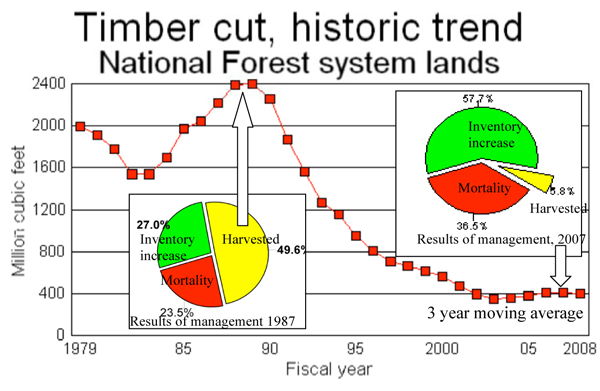Myth, reality and some questions for the future.
Timber harvesting from National Forest land, the single largest timberland holding in the nation, has decreased by some 80% over the past two decades. The impacts of this decline have been far-reaching and well documented. Insect epidemics, fire hazard, fire frequency, and fire control expenditures have increased hugely. Community dislocation, business closures, job losses, and school and local government distress are widespread.
While the fact of the decline is widely known, the public would seem to have little understanding of the relationship of harvesting to forest growth, mortality, and the realities of management and forest health. The widespread misconception that the Forest Service was “over-harvesting” the timber on the National Forests contributed to the demand, led by environmental activists, that the Forest Service reduce, or eliminate entirely, commercial harvesting of timber from its lands. This image of a national resource being decimated by a rapacious timber industry was a far cry from actuality. The record shows that at the apex of harvesting the agency cut each year only 50% of the gross annual growth, while the equivalent of about a quarter of the volume grown died and slightly more was added to the inventory of standing trees.

